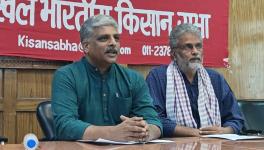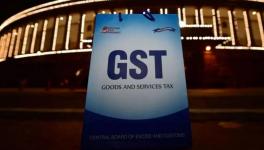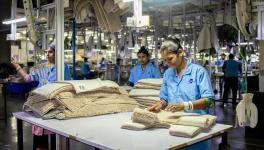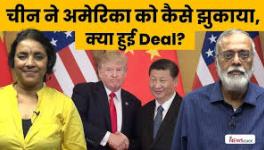Why Tariff Parleys With US Will Hurt Indian Farmers
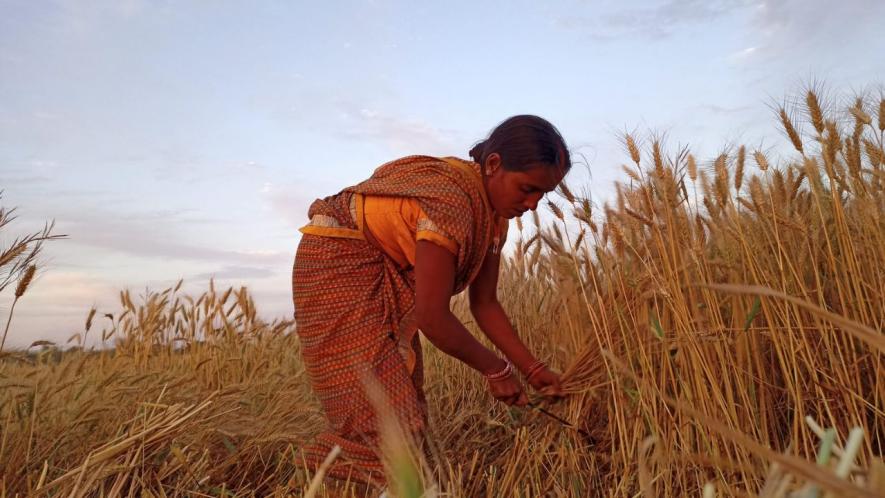
Representational Image. Image Courtesy: PixaHive
Elementary textbooks in economics invariably begin with a completely mythical concept: the concept of “perfect competition”, which is different from the concept of “free competition” that the classical economists and Marx had used.
“Free competition” was characterised by the equality of wages (for equal skills) and of profit-rates across sectors; all it required for its realisation was free mobility of labour and of capital across sectors, which was by no means a far-fetched assumption in the pre-monopoly era.
“Perfect competition” by contrast is characterised additionally by zero profits. This can happen only in one situation: whenever any positive profits are being earned in any sector, so many capitalists flood into that sector that the positive profits disappear. This requires not only free mobility across sectors but free mobility into the ranks of capitalists, that is, workers can become capitalists whenever there are positive profits.
“Perfect competition”, therefore, assumes perfect social mobility, namely, a classless society, which is an absurd assumption to make for a capitalist society and hence a completely mythical state of affairs in the present context.
The prices prevailing in equilibrium under this “perfect competition”, however, have some properties of optimality, because of which, if they prevailed, then any deviations from them would be inadvisable.
Yet, in designing the new international trade rules, the World Trade Organisation (WTO) made the totally illicit assumption that this mythical state of “perfect competition” is what actually prevailed in the world, so that any deviations of prices from what actually prevailed was to be avoided. Accordingly, it stipulated that any subsidies given through price support to producers in any sector were to be avoided as being “trade-distorting”, while subsidies given in the form of income transfers to the same producers were perfectly permissible.
The utter absurdity of this stipulation becomes obvious from the fact that any effort in the real world of today to curb monopolists’ profits by having controls over their profit-margins, would be prohibited as being price-distorting and trade distorting, hence nonoptimal.
Read Also: Two Alternative Growth Models & Foodgrain Output
Indeed, it is amazing that such an absurd stipulation, that any interference with prices as they actually exist in today’s world should be avoided as these prices are optimal in a certain sense, a stipulation based on the pretence that the real world is characterised by “perfect competition”, could be rammed down the throats of so many countries of the Global South in reaching the WTO agreement. These countries should have known better; but they were browbeaten, and one obvious result of this was an assault on peasant agriculture.
It is well-known that advanced capitalist countries give enormous subsidies to their agriculturists, but these subsidies are in the form of direct income transfers rather than through the prices of the goods they sell. In the US and in the European Union such subsidies amount to almost half of the total value of the produce; in Japan, these almost equal the total value of the produce.
Despite their enormity, however, the WTO does not frown upon such subsidies because it considers them “non-price-distorting”, which is supposed to be a virtue because the world is supposed to be characterised by perfect competition. (Even this, however, is theoretically erroneous since in an economy marked by “perfect competition”, direct income transfers are supposed to distort the relative price between work and leisure, and hence are not strictly “non-price-distorting” but let us ignore it here).
But, in a country like India, where the government provides price-support to farmers, i.e., subsidises farmers by interfering with prices (like providing a minimum support price (MSP) or a procurement price), such support is objected to by the advanced capitalist countries and by the WTO, that approves of their subsidies as being “price-distorting”, hence “trade-distorting”, and wrong.
This insistence on “non-price-distorting” subsidies is not only theoretically unfounded, for the world does not conform to a “perfectly competitive economy”, but is impractical as well. Income support can be provided by the government to farmers in the US because there are only a few thousand farmers. But, in an economy like India, which has over a hundred million farmer households, the provision of individual income support to each household is simply not a practical proposition.
The only way that support can be given to so many farmers is through the price mechanism, through the blanket provision of a suitably remunerative price. To insist that support be provided solely through incomes rather than prices, therefore, amounts to demanding de facto an abolition of all support to farmers in a country like India.
Read Also: Trump Tariffs: India Should Shun ‘Business as Usual’ Response
This is, in fact, what has happened vis-a-vis cash crop growers in India: they no longer enjoy the kind of price support that they had earlier. Before the neoliberal regime was instituted, in years of world price crashes, the various government agencies, such as the tea board, coffee board, coir board etc., had stepped in to support domestic prices by purchasing crops at those prices, and the tariff rates had been suitably adjusted to make this possible. But this does not happen any longer.
This withdrawal of price support to cash crops in accordance with the WTO’s stipulations is what has contributed significantly to the large number of farmer suicides in the country over the past several decades, something that had never happened in post-Independence India in the pre- “liberalisation” years.
The government wanted to withdraw price-support from foodgrains as well, which it had not dared to do earlier, through the three infamous farm laws; but the year-long farmer agitation forced it to retract temporarily, though it has not abandoned its project of withdrawing price-support.
US President Donald Trump’s tariff policy has now brought this issue back on the immediate agenda. If India had just imposed retaliatory tariffs against Trump’s tariff-hike, and left the matter there, then there would have been no threats to the farmers.
But since India has agreed to negotiate with the Trump administration, which basically means that it has agreed to lower its tariffs vis-a-vis American goods in return for the US not raising tariffs against India, clearly the amount of price protection that the foodgrain producers had got until now will no longer be available to them.
The net outcome of these negotiations will be a reduction in Indian tariff rates vis-à-vis American goods which will necessarily mean a lowering of the MSP for foodgrains (if at all they continue to exist), and the entry of heavily subsidised American grains (through income transfers) into the Indian market. The long-cherished dream of the US to export its grains to India, unfulfilled since the Green Revolution, will finally get realised.
This would be a disaster from India’s point of view. Not only will it entail much greater distress for farmers, and hence an increase in the incidence of farmer suicides (which had been less severe till now in the case of grain farmers), but a loss of food security for the country.
The country will not only become dependent on food imports from the US which will give the Americans great leverage over Indian policy-making, but the incidence of famines will also increase.
As farmers shift away from producing foodgrains toward other crops that may be remunerative at that moment, when the prices of such crops crash, as they inevitably do on the world market, the country would be short of foreign exchange to purchase foodgrains internationally.
What is more, even if this does not happen, or “food aid” is forthcoming from the US (for which, of course, it will extract a price in some form), the farmers will lack the purchasing power to buy such imported foodgrains. Either way, the country will be pushed into a famine.
This is precisely what has happened in Africa. Several African countries were induced to give up foodgrain production and become importers instead, in the name of exploiting their “comparative advantage”; but they have been racked by famines whenever the prices of the crops they export have crashed.
Economist Amiya Bagchi calls these famines “globalisation famines”, that is, famines that occur because of the abandonment of foodgrain self-sufficiency that is induced by globalisation. Until now, Africa had been the victim of “globalisation famines”; now India will also be a victim, ironically as a fall-out of Trump’s threat to move away from globalisation.
The government, no doubt, will claim that farmers’ interests will not be sacrificed in the trade negotiations with the US; but any reduction in tariffs vis-à-vis American goods will hurt farmers’ interest. The very fact of India’s entering into trade negotiations with the US, therefore, is inimical to farmers’ interest.
Trump’s not raising tariffs vis-à-vis India as a quid pro quo for India’s lowering of tariffs vis-à-vis the US will bring no benefit to our foodgrain growing farmers, since they are not significant exporters of foodgrains to the US. It may bring some benefit to the Indian monopoly capitalists engaged in manufacturing; but that will not make an iota of difference to the grim fate of Indian farmers.
The writer is Professor Emeritus, Centre for Economic Studies and Planning, Jawaharlal Nehru University, New Delhi. The views are personal.
Get the latest reports & analysis with people's perspective on Protests, movements & deep analytical videos, discussions of the current affairs in your Telegram app. Subscribe to NewsClick's Telegram channel & get Real-Time updates on stories, as they get published on our website.











